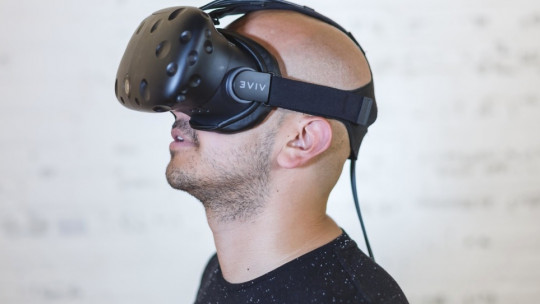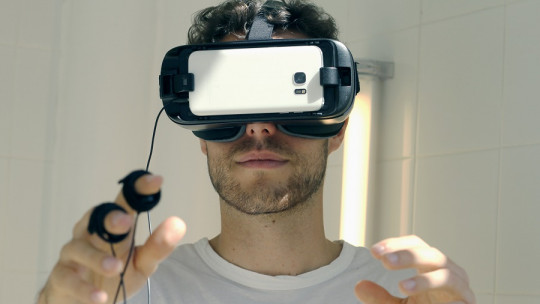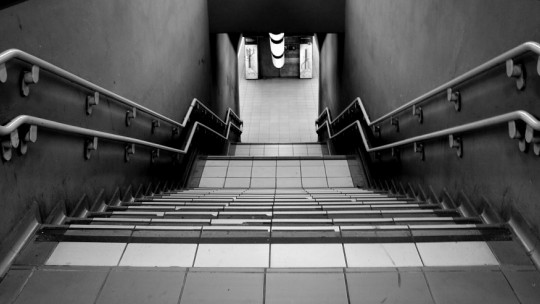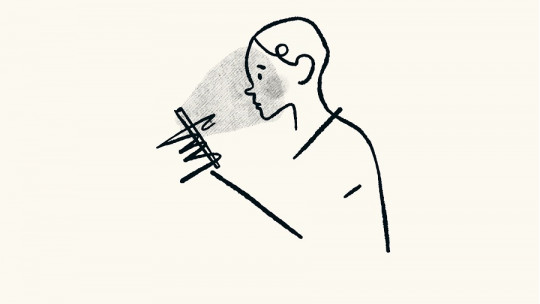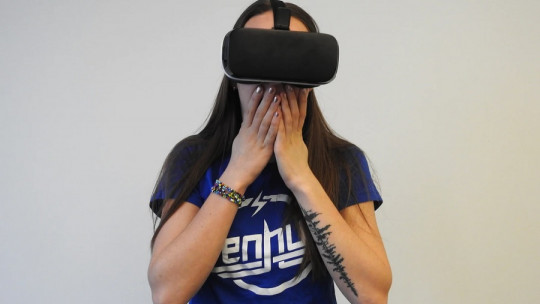
In Psychology, there are many techniques to treat phobias, using a very varied methodology to achieve this goal.
But with the arrival of new technologies, newer techniques are emerging that incorporate the most cutting-edge technical advances. This is the case of virtual reality therapy applied to phobias, which we are going to discover in this article..
What is virtual reality therapy in the treatment of phobias?
Phobias are one of the most common psychological pathologies, as it is estimated that they may be affecting 8% of the adult population. Therefore, it is not surprising that it is one of the problems where the most techniques have emerged with the aim of controlling and eliminating its symptoms. The most recent of all of them would be virtual reality therapy applied to phobias.
This therapy is based on the use of virtual reality equipment, with special glasses that incorporate a screen where an image is projected that adapts to the movement of the person’s head, so an immersive experience is achieved with the stimulus and the environment that is being viewed at that moment. In this way, what is achieved is to expose the aversive stimulus in a virtual way.
In contrast to other techniques, virtual reality therapy applied to phobias does not actually use the element that triggers the fear (be it a needle, a dog, a plane flight or a stage where one can speak in public), but instead An illusion is generated to represent said stimulus, but of such realism that on a psychological level the subject experiences the same reactions. what if it were real.
Therefore, by performing this treatment using virtual images, we are able to simulate in a completely credible way the situation that generates the phobia, just as if the real stimulus were present before the person, so the results obtained are equally valid and extrapolated to when face these stimuli in person.
Advantages of virtual reality
Traditionally, live exposure has been used as the usual technique to treat irrational fears. In contrast, virtual reality therapy applied to phobias offers a series of advantages that we do not find when we talk about traditional exhibition. Let’s see each of them.
1. Control
The first point in favor of virtual reality that we find is the control over the stimulus that the therapist has, unthinkable in many cases of live exposure. For example, by simply manipulating a few buttons you can make the simulated dog have a fiercer or tamer attitude, you can vary the weather conditions and the turbulence experienced during a plane flight, or you can make the spiders come closer each time. more to the patient.
In vivo exposure allows this control only in some types of stimuli. For example, we can bring an object or an animal closer or closer to the subject being treated, but in no case can we vary the weather or the attitude of an animal to be able to graduate the intensity of the exposure according to our objectives and the professional opinion of the subject. psychologist, since some elements would be subject only to the chance of the situation.
It’s more, The professional not only controls what the patient sees, but also the way in which he or she perceives it., and you can add interoceptive elements, such as tunnel or blurred vision, if you want to intensify the experience and focus it on a specific physiological sensation, which is what the subject fears. With which the image is completely modular, at all levels, achieving exactly the type of stimulus we are looking for on each occasion.
Therefore, if we want to have absolute control over the aversive stimulus for an exposure as progressive as we need, it is best to opt for virtual reality therapy applied to phobias to treat this type of disorders, since traditional methods are not as moldable in that sense, as we have seen.
2. Low cost
Another great advantage that the use of virtual reality gives us is the low cost of this technique, since With the same equipment we can prepare a simulated exposure for an infinite number of different stimuli. You just have to prepare the projection that the patient will see through the VR glasses, adapted to the aversive stimulus that brought them to the consultation.
Therefore, it does not matter whether the person wants to be treated for a phobia of insects, driving, storms or blood. Any imaginable option can be treated in the psychologist’s office thanks to virtual reality therapy applied to phobias. Thus, the costs of preparing the treatment as well as its possibilities of carrying it out are much more affordable than with exposure to real stimuli.
Let’s think, for example, about the fear of flying. It would be complicated and tremendously expensive to try to perform each treatment session on board a real airplane, taking off and landing from an airport. On the other hand, by simply putting on the virtual reality glasses, the patient can look around and see himself on board that vehicle that scares him so much, for the moment, until his anxiety reactions begin to disappear.
3. Results
The third advantage that virtual reality therapy applied to phobias gives us, which we already anticipated before, is that The results achieved can be extrapolated to real stimuli. That is, a person who has managed to overcome his fear of dogs, for example, using a virtual reality system, should be able to face the stimulus (real dogs) in person without experiencing anxious symptoms.
Therefore, not only do we have control over the virtual stimulus, which is also very low cost, but we achieve results just as solid as those obtained with live exposure, using real stimuli. Putting both techniques on a balance, there is no doubt that virtual therapy wins the game in most cases, unless the phobia is regarding a very abundant element, easy to obtain and manipulate.
The importance of the therapist
Although we have already seen that virtual reality therapy applied to phobias is affordable, effective and controllable, We cannot ignore the central element of said therapy, which is none other than the psychologist himself who carries it out.. And, no matter how powerful the elements used are, they are of little use if they are not handled with the skill of an experienced professional.
It is the psychologist who, thanks to his insight, knows how the virtual exposure should be modulated, observing the physiological responses of the individualto know when, in fact, the anxiety has overcome a certain degree of the stimulus and can then move on to the next, without anticipating, which would cause a very negative rebound effect for the treatment.
For this reason, no matter how reliable and effective virtual reality therapy is applied to phobias, it is essential that it be guided by a Psychology professional, since only someone with proper training can conduct these sessions, ensuring adequate development of the same and therefore a satisfactory result for the patient, getting rid of their deepest fears once and for all, without taking any risk.
A practical example
To better understand how virtual reality therapy applied to phobias works, we are going to delve into a practical example, through the study published by Baños and collaborators in 2001, in the journal Clínica y Salud. In this work, the authors give the details of a virtual reality treatment for the phobia of flying on an airplane. For this, they had prepared three different scenarios (all virtual) to progressively increase intensity.
In the first scenario, you could see a room in which the subject is preparing his suitcases for the trip, so that he begins to anticipate his fears and therefore his anxiety symptoms, even before leaving home, a situation that occurs in reality, of course. Moving on to the second scenario, the patient would see himself in an airport, before boarding, observing the usual activity of these facilities.
Finally, in the third scenario we would go inside the plane, being able to modify the conditions according to the therapist’s criteria to simulate takeoff, landing, turbulence conditions and other meteorological events that may increase the patient’s anxiety.
After eight sessions, two of them for evaluation and six for treatment with VR glasses, the success of the therapy was confirmed, observing a high reduction in levels of anxiety, avoidance and catastrophic beliefs compared to the event of flying in an airplane. This is a small sample of the tremendous usefulness of this system that, without a doubt, all psychologists specializing in phobias should take into account.

